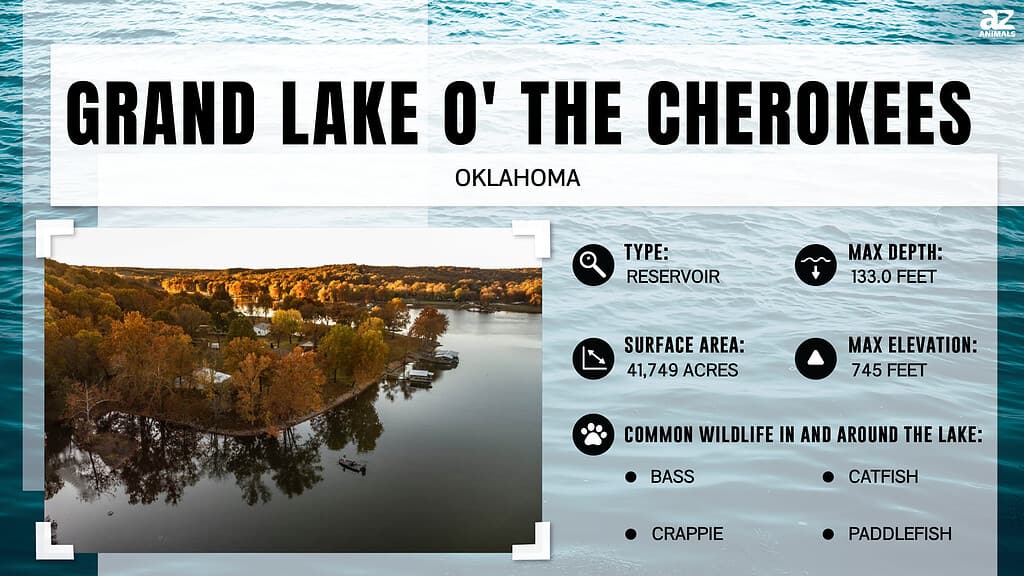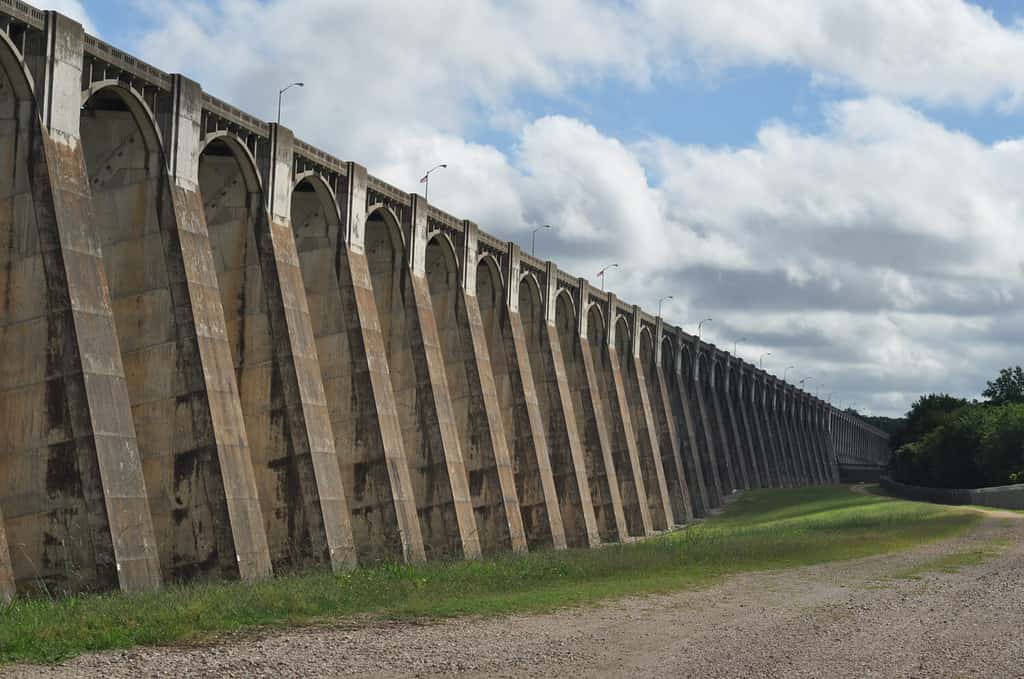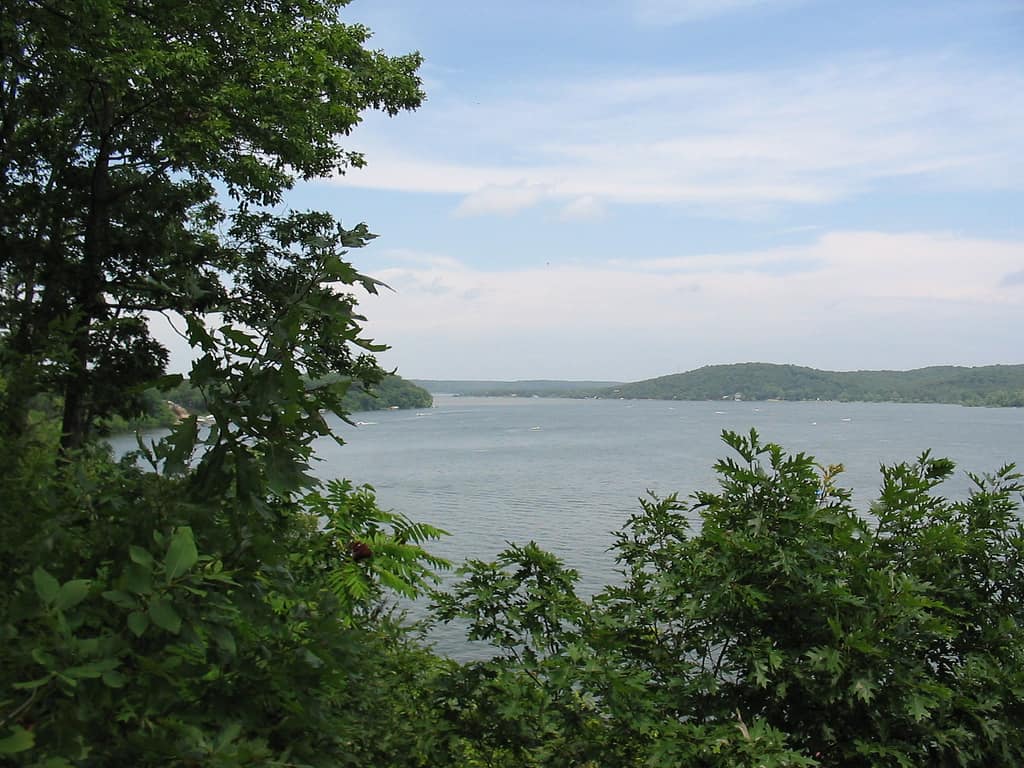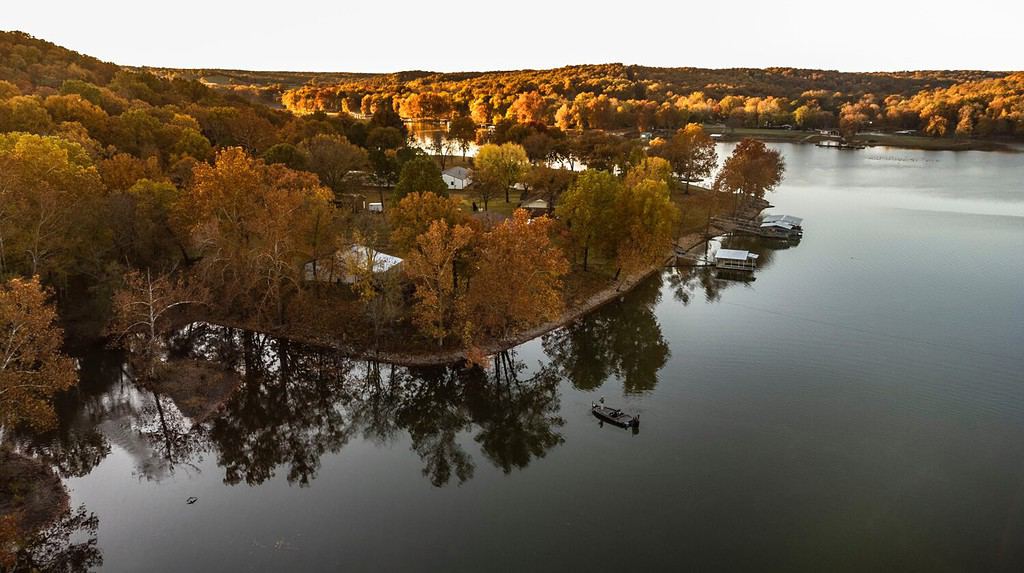How deep is Grand Lake O’ the Cherokees? As one of Oklahoma’s deepest lakes, it has an average depth of just over 36 feet, but its maximum depth is much greater. Most often called simply Grand Lake by local residents, this body of water lies in the far northeastern corner of the state within the boundaries of the Cherokee Nation. It ranks as the second largest lake entirely within the borders of Oklahoma, behind Lake Eufaula and ahead of Broken Bow Lake and Tenkiller Ferry Lake. This lake draws visitors from multiple states, and it generates millions of dollars in the tourism industry as well as massive amounts of hydroelectric power.
How Deep is Grand Lake O’ the Cherokees?

Grand Lake O’ the Cherokees has a maximum depth of 133 feet. The average depth reaches approximately 36.3 feet. The lake has a surface area measuring 41,749 acres. At normal levels, it has a volume of more than 1.5 million acre feet.
Where is Grand Lake O’ the Cherokees?
Grand Lake O’ the Cherokees lies in the far northeastern part of the state. It is situated on the Neosho River, also called the Grand River, along the lower section near the lake. Visitors can find Grand Lake on the map near the scenic town of Grove, Oklahoma. Visitors from Arkansas, Kansas, and Missouri can get to the area easily. The lake has more than 1,300 miles of shoreline. It extends into four Oklahoma counties, including Mayes, Craig, Delaware, and Ottawa. Interstate 44 runs northeast of the lake from Tulsa, Oklahoma toward Joplin, Missouri. It takes approximately one hour to drive from Tulsa to Grand Lake O’ the Cherokees.
How Was the Lake Formed?

The Pensacola Dam is the longest multiple arch dam in the world.
©Smilingcafe/Shutterstock.com
Plans for a power-generating lake within the Cherokee Nation began before Oklahoma even became a state. A Cherokee man named Henry Holderman set the planning in motion for a lake along the lower section of the Grand River. The U.S. Army Corps of Engineers got on board, as did the state of Oklahoma, which formed the Grand River Dam Authority, or GRDA, to build hydroelectric dams along the river.
Grand Lake O’ the Cherokees became a reality with the construction of the Pensacola Dam. Construction on the dam began in 1938 under the authority of the Works Progress Administration. The dam was completed in 1940. Pensacola Dam, deemed the longest multiple arch dam in the world, features 51 arches and spans a length of 5,145 feet, or nearly a mile.
Officials relocated at least 800 graves before submerging the area. Prehistoric artifacts, along with hundreds of human remains, also got excavated hastily to make way for the lake. Native Americans, mostly Cherokee and Seneca-Cayuga citizens, lost more than 2,000 acres of land to the construction of the lake. Many could not afford to purchase new land at the prices they received for their inundated properties.
How is Grand Lake O’ the Cherokees Used Today?

Grand Lake O’ the Cherokees provides many recreational opportunities as well as water and power to the region.
©JDMcGreg / CC BY-SA 3.0 – License
Today, Grand Lake O’ the Cherokees serves multiple purposes. Like many man-made reservoirs, it provides a source of water to local communities. It also serves as a home and resource for resident fish and wildlife. Of course, Grand Lake also provides many recreational opportunities, including boating, fishing, swimming, and much more. And of course, it functions as a producer of hydroelectric power. The GRDA ranks as one of the top producers of electricity in the United States, and the turbine generators in Pensacola Dam provide much of that power.
What Parks Can Visitors Explore?

Oklahoma has seven state parks on Grand Lake O’ the Cherokees.
©Creating Outdoors/Shutterstock.com
With 1,300 miles of shoreline, visitors can find plenty of public and private places to enjoy themselves along the banks of this picturesque lake. The seven state parks open to visitors offer many recreational opportunities as well as hundreds of campsites for both RV and tent camping. The Disney Area State Park, which is day use only, and the Little Blue Area State Park, and Spavinaw Area State Park, which offer day use activities such as swimming and picnicking, as well as tent camping. The Bernice Area State Park, Cherokee Area State Park, Honey Creek Area State Park, and Twin Bridges Area State Park each offer both tent and RV camping as well as an array of other activities.
Fishing
Grand Lake O’ the Cherokees has a reputation for excellent fishing. Large tournaments take place on the lake each year. Some of the popular fish found in this lake include paddlefish, largemouth, white, and striped bass, catfish, bluegill, and crappie. Visitors enjoy both boat fishing and fishing from the extensive shoreline.
Wildlife
Visitors may spot a great variety of wildlife in northeastern Oklahoma around the shores of Grand Lake O’ the Cherokees. The town of Grove holds an annual Pelican Festival during the migration of White Pelicans through the area. Birdwatchers can also easily spot Bald Eagles in the winter, and large numbers of migratory waterfowl. White-tailed deer frequent the lake as do bobcats, foxes, coyotes, raccoons, otters, beavers, and many other mammals. One may find a variety of venomous and non-venomous snakes in and around the lake, as well as many other reptiles and amphibians.
The photo featured at the top of this post is ©
Thank you for reading! Have some feedback for us? Contact the AZ Animals editorial team.






